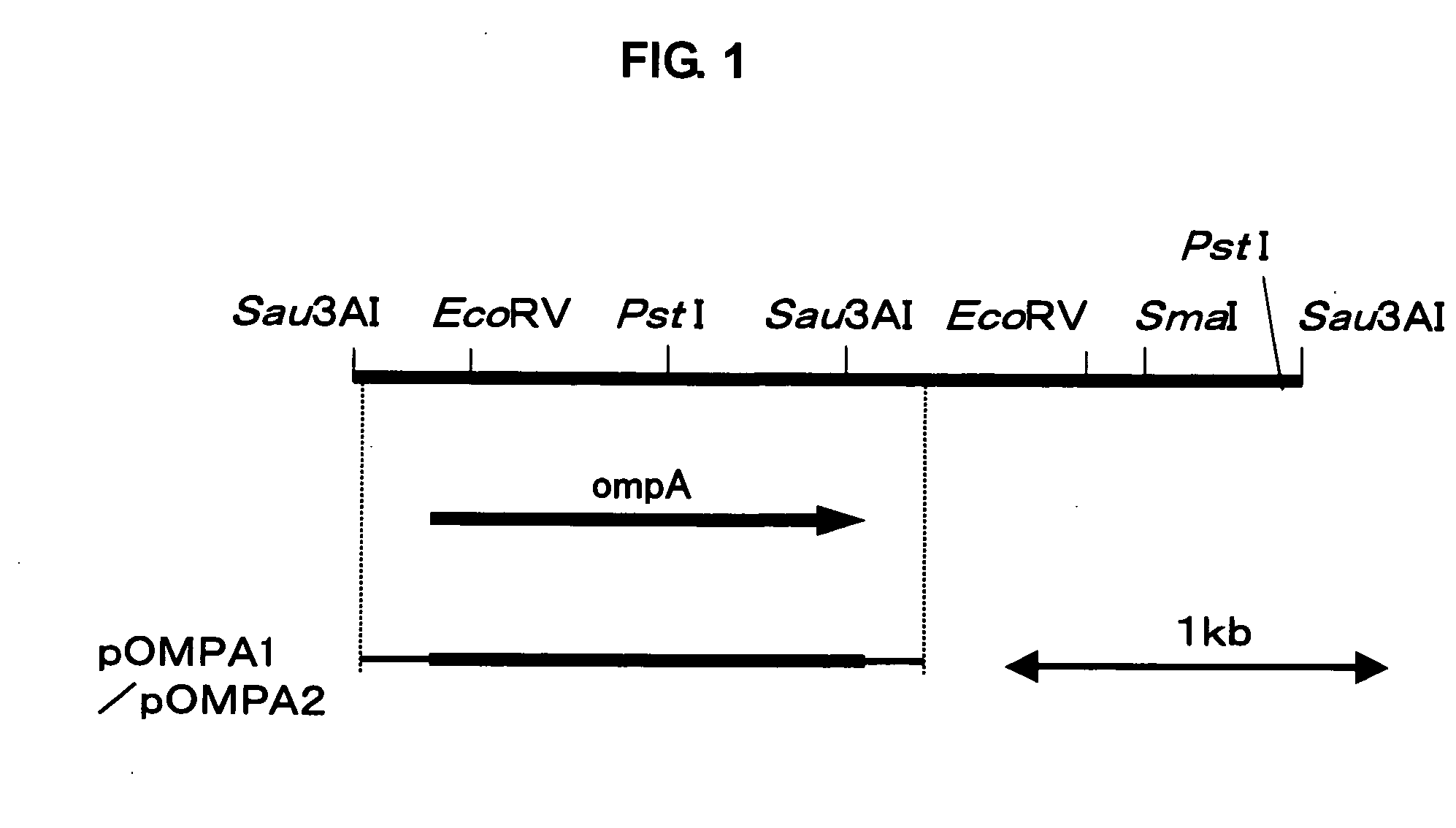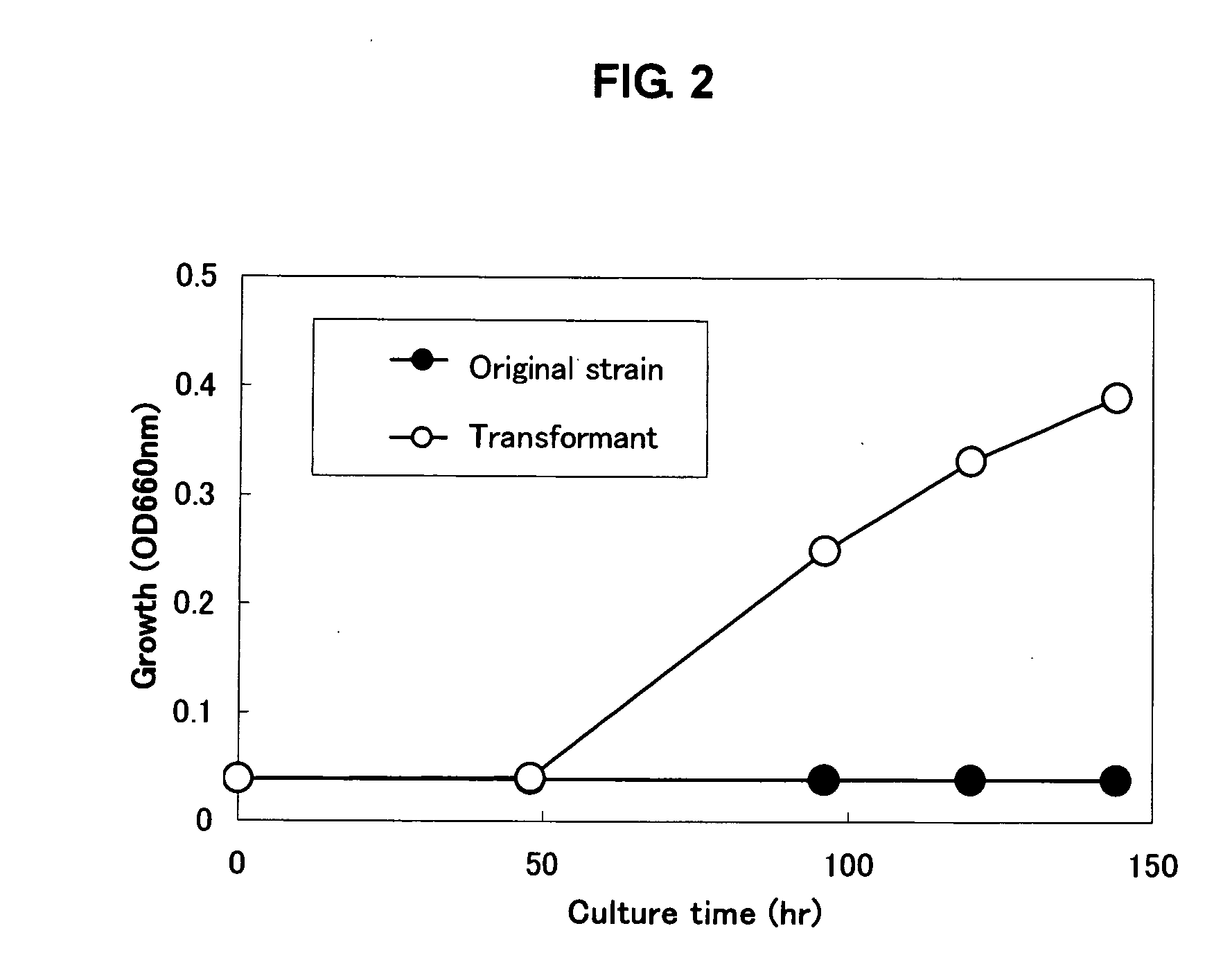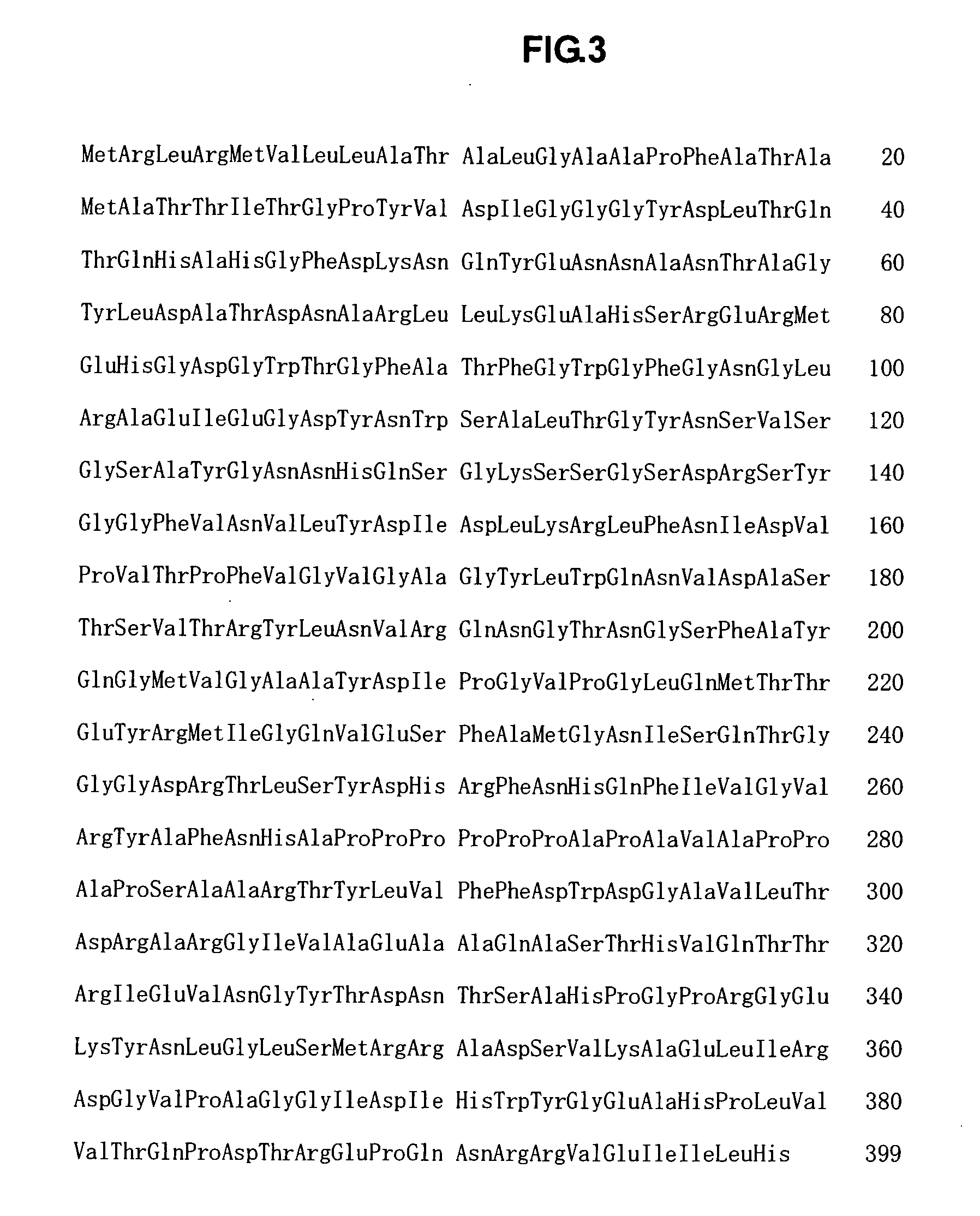Gene participating in growth promoting function of acetic acid bacterium and utilization of the same
a technology of acetic acid bacteria and gene, which is applied in the field of gene encoding a protein having a growth-promoting function, can solve the problems of uneconomical implementation of such a method at industrial scale, difficult to obtain pqq in large quantities, and high cost of pqq, so as to improve the growth-promoting function, shorten the so-called growth induction period, and produce vinegar efficiently
- Summary
- Abstract
- Description
- Claims
- Application Information
AI Technical Summary
Benefits of technology
Problems solved by technology
Method used
Image
Examples
example 1
Cloning of a Gene Derived from Gluconacetobactor entanii having a Growth-Promoting Function and Determination of the Nucleotide Sequence and the Amino Acid Sequence thereof
(1) Construction of Chromosomal DNA Library
[0070] The Acetobacter altoacetigenes MH-24 strain (FERM BP-491), which is a strain of Gluconacetobacter entanii, was cultured in shaking culture at 30° C. in a YPG medium (3% glucose, 0.5% yeast extract, and 0.2% polypeptone) supplemented with 6% acetic acid and 4% ethanol. After the cultivation, the culture medium was centrifuged (7,500×g for 10 minutes), thereby obtaining bacterial cells. From the thus obtained bacterial cells, chromosomal DNAs were prepared according to a chromosomal DNA preparation method (e.g., see JP Patent Publication (Kokai) No. 60-9489 A (1985)).
[0071] The chromosomal DNAs obtained in the above manner were partially digested with a restriction enzyme Sau3A I (from TAKARA BIO INC.). Escherichia coli-acetic acid bacterium shuttle vector pUF106...
example 2
Effect of Shortening the Growth Induction Period in a Transformant with a Gene having a Growth-Promoting Function from Gluconacetobacter entanii
(1) Transformation into Acetobacter aceti
[0076] The above ompA gene cloned according to Example 1 from the Acetobacter altoacetigenes MH-24 strain (FERM BP-491) was amplified by the PCR method using KOD-Plus- (from TOYOBO CO., LTD.). The thus amplified DNA fragment was inserted into the restriction enzyme Sma I cleavage site of the acetic acid bacterium—Escherichia coli shuttle vector pUF106 (e.g., see Fujiwara, M. et al., CELLULOSE, 1989, 153-158), so as to prepare a plasmid pOMPA1. The amplified fragment inserted in pOMPA1 is schematically shown in FIG. 1. FIG. 1 shows the restriction enzyme map of the Gluconacetobacter entanii-derived gene fragment (pS10) cloned using Sau3A I, the position of the gene having the growth-promoting function, and the fragment inserted into pOMPA1.
[0077] The PCR method was carried out as described in detai...
example 3
Enhancement of Acetic Acid Resistance of the Transformant with a Gene having a Growth-Promoting Function from Gluconacetobacter entanii
(1) Construction of Acetic Acid Bacterium—Escherichia Coli Shuttle Vector pGI18
[0084] pGI18 was constructed using an approximately 3.1-kb plasmid pGI1 derived from the Acetobacter altoacetigenes MH-24 strain (FERM BP-491) and pUC18.
[0085] Specifically, bacterial cells were collected from the culture medium of the Acetobacter altoacetigenes MH-24 strain (FERM BP-491), lysed using sodium hydroxide or sodium dodecyl sulfate, treated with phenol, and then treated with ethanol, thereby purifying plasmid DNA.
[0086] The thus obtained plasmid was a circular double-stranded DNA plasmid having 3 recognition sites for Hinc II and 1 recognition site for Sfi I. The entire length of the plasmid was approximately 3100 base pairs (bp). Furthermore, the plasmid did not have recognition sites for EcoR I, Sac I, Kpn I, Sma I, BamH I, Xba I, Sal I, Pst I, Sph I, or...
PUM
| Property | Measurement | Unit |
|---|---|---|
| temperature | aaaaa | aaaaa |
| temperature | aaaaa | aaaaa |
| temperature | aaaaa | aaaaa |
Abstract
Description
Claims
Application Information
 Login to View More
Login to View More - R&D
- Intellectual Property
- Life Sciences
- Materials
- Tech Scout
- Unparalleled Data Quality
- Higher Quality Content
- 60% Fewer Hallucinations
Browse by: Latest US Patents, China's latest patents, Technical Efficacy Thesaurus, Application Domain, Technology Topic, Popular Technical Reports.
© 2025 PatSnap. All rights reserved.Legal|Privacy policy|Modern Slavery Act Transparency Statement|Sitemap|About US| Contact US: help@patsnap.com



